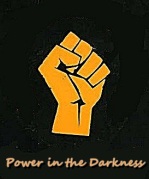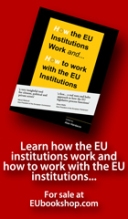Credit outperformed equity today in a cautious session. Protests against government austerity measures took place across Europe, including a general strike in Spain. But in a day light on economic news the markets were far more concerned with the fate of Anglo Irish Bank and a possible downgrade of Spain. Both issues should be resolved tomorrow, and investors and dealers seemed to spend most of today adjusting their positions, according to the daily alert frpm Markit.
“The Irish Times reported that the government will also release a “worst case” scenario that will show the cost rising well above EUR30 billion. We “will get the definite picture tomorrow” according to foreign minister Michael Martin, though it is likely to be after the close.”
Gavan Nolan

Further news on Anglo Irish emerged after the FT published a report stating that the government will announce an additional capital injection of EUR5 billion. This will bring the total cost of bailout to EUR30 billion, short of the EUR35 billion figure that so unnerved the markets.
“But the Irish Times reported that the government will also release a “worst case” scenario that will show the cost rising well above EUR30 billion. Ireland‘s spreads were only slightly wider on the news, and quickly recovered later in the day. We “will get the definite picture tomorrow” according to foreign minister Michael Martin, though it is likely to be after the close,” Gavan Nolan, vice president at Markit Credit Research writes in today’s daily alert.
Tomorrow will also see the expiration of EUR225 billion in ECB 3-, 6- and 12 month loans.
“The central bank allocated just 104 billion in 3-month loans today, well below the EUR150 billion consensus estimate. Tomorrow’s weekly auction will give a better idea of banks’ reliance on the ECB for funding,” Nolan points out.
 “Equity markets remained lacklustre throughout the day, unlike their sovereign and financial inspired credit counterparts. Even robust leading indicators from Asia couldn’t provide impetus.”
“Equity markets remained lacklustre throughout the day, unlike their sovereign and financial inspired credit counterparts. Even robust leading indicators from Asia couldn’t provide impetus.”
The Markit/HSBC China Manufacturing PMI came in stronger than expected, with the sector posting its highest reading for five months. Japan’s Tankan business sentiment survey also beat expectations, although signs that manufacturers are pessimistic about the months ahead tempered gains. Consumer finance firms Acom and Promise Co widened sharply following Takefuji’s bankruptcy.
S&P placed both firms on negative watch.
BP was one of the day’s strongest performers after it managed to sell $3.5 billion of senior unsecured notes ($2bn 2015, $1.5bn 2020). “The company’s spreads have tightened since it managed to stop the oil leak, though it remains significantly wider than its single A peers. The credit will struggle to shake off the litigation risk premium that has been attached to it since April,” Gavan Nolan adds.

- Markit iTraxx Europe 112bp (-3), Markit iTraxx Crossover 514bp (-7)
- Markit iTraxx SovX Western Europe 159bp (-5)
- Markit iTraxx Senior Financials 144.5bp (-4.5)
- Sovereigns – Greece 790bp (-17), Spain 230bp (-5), Portugal 440bp (-6), Italy 198bp (-4), Ireland 475bp (-8), Belgium 132bp (-4)
- Anglo Irish Bank 935bp (-12)
- BP 165bp (-19)
HERE”S TODAY’s EDITION OF “UNIQUE MARKET ACTIVITY” by Markit BOAT.
*
Related Articles
- Ireland Leads Surge in Sovereign Default Swaps on Bailout Costs (businessweek.com)
- Investors to get “the definite picture” of Anglo Irish (reuters.com)
- Anglo Irish bill will be confirmed tomorrow (forexlive.com)
- Ireland About To Tack On €5 Billion More To Country’s Anglo Irish Bailout Bill (businessinsider.com)
- Lenihan: Anglo failure would ‘bring down’ Ireland (politics.ie)
































Espen G. Haug: Algorithms Should Be Monitored On A Daily Basis
Leading derivative expert, author and regular contributor at the Econotwist’s, Espen Gaarder Haug, says algorithms have many weaknesses and should be monitored on a daily basis by people with extensive market knowledge and experience. The former Norwegian Wall Street trader have a thing or two to say in relation to the ongoing circus at Oslo District Court – also known as the “robot case.”
“Should the major players be allowed to carry on trading algorithm with no monitoring, without people with broad market experience monitoring them?”
Espen Gaarder Haug
The day traders in the so-called “robot case” – now appearing before the Oslo District Court accused of market manipulation – run their scheme undisturbed for nearly six months. First, when the Oslo Stock Exchange contacted the brokerage and investment firm that owned the shares that the robot was trading, the alarm was raised and the possibility to manipulate the trading program was removed.
“A rational investor would have plugged these holes quickly,” Dr. Espen Gaarder Haug comments.
“If you choose to outsource market making to a computer and you lose money.. I mean, you just have to accept it,” he adds.
Espen Gaarder Haug holds a Ph.D. from NTNU and is regarded as one of the worlds leading experts on derivatives and option pricing models.
His book “The Complete Guide To Option Pricing Formulas” is seen as “The Bible” by many fund managers and derivative traders.
He has worked almost 17 years as a trader on Wall Street, among others, at JP Morgan and Chase Manhattan Bank.
He has also worked as an active manager of multi-billion dollar hedge funds, like Amaranth and Paloma.
Dr. Haug underlines that he don’t know anything about robot manipulation other than what’s been written in media, but says he recognize similar issues from his experience in the international financial industry.
He believes that the trading algorithm requires good internal monitoring y individuals with broad market experience.
“I know many who run algorithm trading, and they’re always following the trades with several well-qualified employees – and often by the one who created the algorithm,” he says.
There’s Always A Risk
“Robot trading always involves a risk of weakness in the algorithm,” Haug points out.
The ongoing court case in Oslo have revealed that the two charged day traders was able to exploit the same weakness over and over again.
Timber Hill (who is a part of the Interactive Broker Group) was not aware of this before the Oslo Stock Exchange contacted them on March 14th this year.
Testifying before the court on Tuesday, Thomas Borchgrevink, manager of market surveillance at the Oslo Stock Exchange, said: “I felt that they were not aware of this. They were not on the ball.”
Timber Hill closed down, temporarily, the robot in question when the Oslo Stock Exchange made them aware of the error, and has since modified the algorithms.
Chill, Timber Hill
Espen Gaarder Haug assumes that the Timber Hills algorithm was not only used to make trading in stock (so-called market making) in the Hafslund (B shares), Wilh. Wilhelmsen and Odfjell (B shares), which is relevant for this trial.
There may be several reasons why a brokerage firm choose to let a robot trade without supervision, he says.
“They can, for example, have too much faith in their algorithm, so they do not fear failure. It may also be that they trade many shares in as many markets as possible, so that each share has little importance. And they choose to take a risk that in some cases leads to losses”.
“Around-the-clock monitoring is costly, but the algorithms have many weaknesses and should be monitored on a daily basis by people with extensive market knowledge and experience,” he notes.
Mandatory Monitoring?
Haug believes it is reason to ask whether monitoring should be mandatory:
*
“Should the major players be allowed to carry on trading algorithm with no monitoring, without people with broad market experience monitoring them?” Dr. Haug asks.
He believes naive algorithm trading, could not only harm itself, but at worst, damage the entire economy by reinforce large price movements.
Espen Gaarder Haug predicted in detail the financial crisis by the end of 2006, beginning of 2007, in a series of interviews and articles published by the Norwegian-The-Economist-peer – Økonomisk Rapport in 2007 and 2008.
*
“Although it is difficult to prove, there are good indications that the US stock market crash in 1987 was reinforced by the naive algorithm trading. The algorithms were based on a number of imaginative assumptions that broke completely with the crash. Some major players followed their naive algorithms slavic and sold more and more the more as the market dropped based on signals from the algorithms they slavishly followed,” Dr. Haug says.
*
www.espenhaug.com
Related by the Econotwist’s:
In Defence Of A Robot
Update: Day Traders Crack The Timber Hill Trading System
Oslo Stock Exchange Comments On Market Manipulation
Illegal To Outsmart A Trading Robot, Expert Says
*
3 Comments
Filed under International Econnomic Politics, National Economic Politics
Tagged as Business, Espen Gaarder Haug, Financial Markets, International Econnomic Politics, invest, Market manipulation, Oslo District Court, Oslo Stock Exchange, Stock market, Stocks and Bonds, Trade, Views, commentaries and opinions, Wall Street